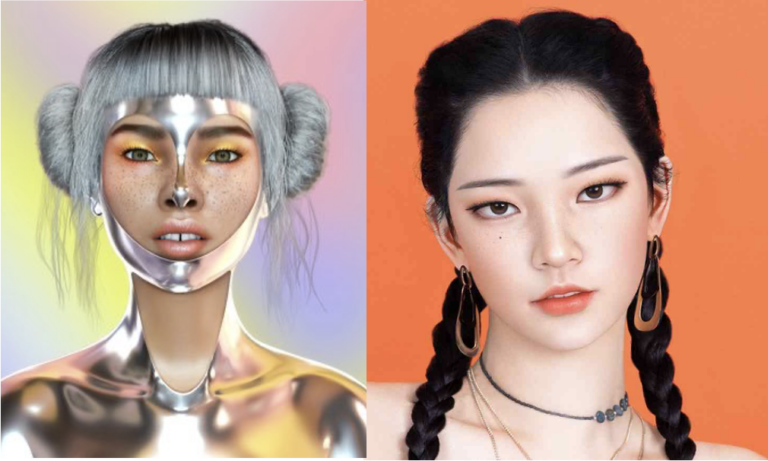Storytelling is innate in all of us. Stories tell us our histories and of the world we live in. From early cave paintings to the oral and written traditions underpinning much of human civilisations and world religions. From Gilgamesh to Gutenberg, Shakespeare to Spielberg, stories are how we understand where we come from and figure our place in the world. And they are everywhere: Film, television, theatre, stand-up, books, news, the sermon you heard last Sunday, the dream you had last night, and the gossip you shared yesterday. We tell stories all the time. And if brands were to behave like a person, shouldn’t brands be in the business of storytelling too?

Why brands need to tell stories
It used to be that brands are about logos, advertising and visual identity. Now it’s so much more. It’s about purpose and meaning, experience and—yes—stories. From brand name and corporate videos to, well, every platform of communication, brands tell stories. It’s in their customer experience design (or CX) and every social media post they publish.
Coca-Cola does this especially well. From the iconic Hilltop to Small World Machines and Share a Coke, from California to India, from the 1970s to the 2010s, the brand has told a consistent story of sharing happiness and building connections. They’re successful at it because they are committed to using storytelling as a key marketing strategy. And they share timeless stories—about how we are more alike than different—that are timely and human. Just look at their ads. The focus isn’t on products and benefits, but on emotions couched in scenarios that are familiar to us, desired by us.
Not a gifted storyteller? Your brand needs you to be
Stefan Sagmeister famously said designers (or more accurately, rollercoaster designers) are not storytellers. There’s much I love about Sagmeister but I will have to disagree with him on this one. Not everyone is a gifted storyteller, but everyone tells stories. It’s like when people ask if I can sing. Of course I can. But you didn’t ask if I can sing well.
So yes, while not all designers are gifted at storytelling, all creatives do tell stories. (And yes, there is a distinction between designers and creatives.) And indeed you must engage in brand storytelling today, where audiences are demanding authenticity, purpose and connection, and nobody wants to be sold to. Stories provide a good pull strategy to attract customers into the fold, draw them into the conversation and, ultimately, into the universe that you will share with them. So can we all get better at brand storytelling? That too, indeed, we must.
So what makes stories so effective? Here are 5 reasons.
1. Storytelling communicates your brand’s view of reality to others
If you think about it, communication is about transmission of information. Information that customers don’t already have. And oftentimes, in the world of marketing, that information is designed to alter behaviour. It could be to change perception of a category (e.g., why go vegan), to sway preference between brands (e.g., why Coke and not Dr Pepper), to recognise a need (e.g., Alexa), or to act in some way (e.g., ask your doctor about hemorrhoid cream). And when we’re asking someone to change their perception or behaviour, story provides the context to aid understanding in a way that no other medium can. What makes this context so effective? One word: Emotions.
In coming out with stories to move people to action, don’t immediately look to your history, vision and aspirations to convey your worldview to others. Research shows that it is only when a story mirrors the emotions of the audience, when it becomes a shared experience, that a powerful connection is formed. Only when you’ve established that connection, can you be in a good position to influence and convince others of your worldview.
Mariah Carey got it…

So how do we account for this phenomena? This brings us to…
2. Storytelling has been scientifically proven to work
According to a New York Times article, stories stimulate the brain and have the power to change the way we act. There are numerous scientific research, and essays including this one, that show how the human brain is wired and “rewired” when listening to stories.
When we listen to stories, we engage in what is called neural coupling and mirroring. This allows us to see and experience those stories the way the speaker or message relayer did. (I suspect it’s because most people are empathetic creatures at the core.) When we listen to stories, our brain also releases dopamine into the system. Dopamine is the neurotransmitter that helps us regulate movement, attention, learning and emotional responses; it is also responsible for our pleasure principles and can help us remember things up to 22 times better. This perhaps is also due to the fact that more areas of our brains are engaged when we listen to a story. As summarised in this infographic, stories help forge emotional connection and make information memorable.

Need more convincing? Consider the last time you went to the movies. They are all about the art of storytelling. For 2 hrs or so, the story consumes us: We tear up when the music swells, cringe when the door creaks, and feel relieved when it turns out to be just that darned cat. Film school teaches directors, editors, scriptwriters the art of storytelling and emotional manipulation. Feel cheated? You shouldn’t be. After all, we pay money to get scared, to have a good laugh, to cry and be transported. We crave stories.
3. Storytelling humanises your brand
If you think about it, this is the basic requirement of how brands need to behave on social media too, because people want to relate to brands as people and not as faceless corporations. People want to know what the brand stands for, what its values are, and how it behaves in the world. They will then decide if these sync up with their personal values and desires. And brand storytelling can help you do that.
We see this play out often in advertising today. Take Tiger beer, for example. From the 1930s when they started through to the 1940s, they were—as with most adverts then—promoting health benefits (from increasing virility to improving fertility). From thereon, they focused their messages on award-winning formula (“gold medal”) and postwar exotica. And the message of winning has pervaded its ads through to the naughts (remember that Jessica Alba commercial?). Still very much about features and benefits (I mean, c’mon, Jessica Alba.). But in recent years, Tiger shifted its approach to a much more storytelling, emotionally-driven one.
According to Tiger, its Uncaged campaign is based on the brand’s story—its rise from a hawker centre beverage to a global brand, how it pushed against what is deemed impossible. That no matter where you start from, having courage, challenging conventions and defying expectations empowers you to achieve what you thought wasn’t possible before. It’s a story about pursuing your passion and making an impact. And they told this story through the lens of artists, technologists, chefs, designers and entrepreneurs. And these stories unfolded across multiple platforms: TVC, packaging, outdoor advertising, product packaging, events and activations. What these stories amount to was to humanise a brand. As this TVC showed, Tiger is just like you and me.
They can no longer promise you children but at least they can promise you understanding and a shared value system. And isn’t that what we all want from our favourite brands?
4. Storytelling helps your brand stand out
In the age of Internet, this becomes even more difficult and necessary. Because today, it’s not enough to have a quality product or service, you need to know how to talk about it in a way that differentiates you from the crowd. Brand storytelling done well can help you win the battle for attention.
Consider “Generation Lockdown” from March For Our Lives. This public service announcement was released upon the 20th anniversary of the Columbine shooting. And tragically, it feels like not a lot has changed when it comes to gun violence in the US and around the world. The shootings have continued.
It’s difficult to not think about Kayleigh (and the reactions of the employees) long after the video’s chilling final frame. 22 million views in 1 week. US$15 million in earned media. A winner of this year’s Cannes Lions. This video certainly has achieved the cut-through it needed by shooting an arrow right through our hearts. And it does so in the form of a girl schooling a bunch of adults what to do in the event of an active shooter, when it should be the other way around. It was timely, human, and emotionally resonant. What a story.
5. Storytelling helps you build brand communities
One of the most fundamental human needs is the need for belonging. We all want to belong—to our families, our societies, our teams. Wise brands tap into that universal desire by inviting people to participate in a larger story and giving them a shared identity. This marketing strategy underpins what you come to now know as KOLs, micro influencers and brand ambassadors. By watching the story of someone we admire and whose lifestyle and values we want to emulate, we feel a rush of aspiration and desire. And when we get to wear that badge on our sleeves, we identify.
Sports brands do this particularly well. Sports marketing is rife with brand ambassadorship. It’s aspirational and motivational. There’s nothing quite like having your heroes asking you to be part of their journey and community. But did you know that what we’ve all come to admire are not the athletes themselves but the stories of their struggles and triumphs? Consider this brand manifesto video by The North Face. They used it to build community, loyalty, pride and tribe among fans. As a viewer, you go, “That speaks to me” “That’s who I wanna be”. It’s certainly one way to build brand affinity with customers—and brand storytelling can help you achieve that. By making the brand real and resonant.
How will you tell your brand story?
Because they convey your personality and values, because they hit the emotional quotient, make your brand human and memorable, and because they help you build connection, community and loyalty, you must tell stories. Whether you are creating a brand, building a brand or reinventing one, you must consider the merits brand storytelling can bring to your marketing strategy.
What’s wonderful about the world of marketing now is we are dealing with integrated marketing communication (multichannel and omnichannel), where everyone’s focused on building relationships and not a sale. This means you no longer have to cram your storytelling into a print ad or a 30sec TVC. Digital and social give us all the capability to tell micro stories or chapters that pipe in to a larger story. Media buying technology even allows you to track customers and serve them the next episode of your story. You have the benefit of letting your story unfurl across time and platform: From TVC to social media, to activation to website, etc. The question isn’t whether you’re going to use brand storytelling but how you’re going to use it.
So what story will you tell?






